Puente Colgante del Monte Udusan (Puente Colgante en Forma de Y de Geochang) (우두산 출렁다리 (거창 Y자형 출렁다리))
7.2Km 2024-10-10
Uisangbong-gil 830, Gajo-myeon, Geochang-gun, Gyeongsangnam-do
Valle Hongnyudong (홍류동계곡)
9.8Km 2021-02-06
Gayasan-ro 1502-9, Gaya-myeon, Hapcheon-gun, Gyeongsangnam-do.
La hondonada de 4 km que se extiende entre la entrada al Parque Nacional del Monte Gayasan y el templo Haeinsa recibe el nombre de valle Hongnyudong. Mereció esta denominación porque el follaje de esta región se torna tan carmesí en el otoño que el agua que fluye por la cuenca que refleja este color parece carmesí también.
Este es el lugar donde el sabio Choe Chi-Won, tras regresar a Silla (57 a.C.-935) de China halló en semejante desorganización al país que decidió retirarse. Aquí se internó con su vida privada entre las poesías y residió hasta su muerte.
En el valle Hongnyudong hay 19 sitios famosos, incluyendo los principales patrimonios culturales como por ejemplo el pabellón Nongsangjeong, la roca Nakwadam, y las cascadas Bunokpok, entre otros. El paisaje del pabellón Nongsanjeong, donde Choe Chi-Won leyó sus poemas y jugó al baduk (juego del go), tiene una belleza particular. Sobre el lado opuesto se eleva una roca sobre la que se pueden leer los caracteres escritos de puño y letra del sabio maestro Choe Chi-Won.
Las cascadas Yongmun, situadas en el sector norte del valle, muestran un bellísimo panorama con su armoniosa combinación de caídas de aguas cual rollos de seda y las rocas Giamgoeseok. El entorno del valle Hongnyudong cambia a cada estación y esta área puede ser considerada la parte más delicada del monte Gayasan. Durante la primavera, el valle es famoso por la plenitud de azaleas en flor y durante el verano, por sus pinos de mil años y el espeso follaje de árboles que crece tupido, y la fresca y cristalina agua que fluye a través de él. En el otoño, es famoso por los bosques de pino de las inmediaciones y el tupido follaje que se tiñe de colores y acentúa el carmesí de las hojas otoñales, haciendo que el rojo reflejado en las aguas del valle se asemeje a una llama ardiente.
Dals Garden (달의 정원)
10.9Km 2025-06-04
13-31, Chiin 1-gil, Hapcheon-gun, Gyeongsangnam-do
The Dals Garden is a modern facility grafted on a traditional Korean style house. The old but graceful walls with the garden beyond them welcome the guests first. Entering the house, various flower plants and a wide grass garden add to the excitement of travelers. The Toenmaru (a narrow wooden porch running along the outside of the room), pillars and tiles of the neat and well-constructed Korean style house, shine as if they are wiped with oil every day. The peak of Mt. Gayasan beyond the house looks like a picture at a glance. The Moon Garden has 10 rooms in total. Among them, 2 Special Rooms are a little wider than ordinary rooms and equipped with a sink. Though cooking in the room is not allowed, simple food and beverage can be consumed if they are cleaned well afterwards. The room with a single bed is good for a solo traveler or a foreigner who is not accustomed to sleeping in an Ondol room. It takes only 3 minutes to go to Haeinsa Intercity Bus Stop. It is required, however, to pay the admission fee to Haeinsa Temple and the parking fee in addition to the room rates because the house is located on the way to Haeinsa Temple. It is recommended to enjoy walking around the Haeinsa Temple early in the next morning or going up to nearby peaks such as Mt. Maehwasan or Namsan Cheil Peak.
Chuwoojae House / 추우재
11.4Km 2025-08-12
20-1, Gaesil 2-gil, Ssangnim-myeon, Goryeong-gun, Gyeongsangbuk-do
+82-54-956-4022 / +82-10-3207-4022
The village of Gaesil is known as the village of the Seonsan Kim clan. It was established by the descendants of Kim Jong-jik (pen-name: Jeompiljae, 1431-1492), a leading Korean Neo-Confucian scholar and the founder of the Yeongnam Sarim faction during the mid-Joseon period. Boasting over 300 years of tradition, the village is home to sixty households as well as a number of cultural heritages including the head house of Kim Jong-jik (Provincial Folk Material No. 62), Doyeonjae (Provincial Cultural Heritage material No. 111), which is the old village school, and the printing woodblocks for a collection of literary works including Yijonrok (a book about the life and achievements of Kim’s father Kim Suk-ja) written by Kim Jong-jik (Provincial Tangible Cultural Heritage No. 175).
The residents have renovated the village’s earthen walls and hanok houses into a current hanok village, and also run various hands-on experience programs including a hanok stay, a farm product cultivation program, and traditional etiquette and games, thereby offering urban travelers an opportunity to experience a truly rural lifestyle. Chuwoojae House, situated in the heart of the village of Gaesil, has two buildings that are available for rent including the bonchae, which is a single-family house, and the sarangchae, which is a detached building). All guestrooms are equipped with a bathroom and cooking facilities. In particular, the bonchae is heated with a furnace. Guests can use the village public parking lot, but there is also a separate parking lot not far from the house.
Aldea Gaesil (개실마을)
11.5Km 2022-05-10
Gaesil 1-gil 29, Ssangnim-myeon, Goryeong-gun, Gyeongsangbuk-do
La aldea Gaesil está situada en Gyeongsangbuk-do, enfrente del pico Jeopmubong, con forma de mariposa. Hay muchas leyendas sobre protocolo coreano que proceden de este lugar. Una de ellas hace mención a una familia en la que los hijos han apoyado siempre a sus padres durante 5 generaciones. Cuando la madre enfermó, un faisán voló hasta la cocina. En invierno, una carpa saltó del estanque. Por esta leyenda, el pueblo también ha sido llamado "Ingeobaemi". Al contrario que otros pueblos, los descendientes de la aldea Gaesil han mantenido sus tradiciones, como el protocolo y la devoción a los padres, que se puede experimentar durante la estancia en la aldea.
Hadongdaek House / 하동댁
11.5Km 2025-08-13
45, Gaesil 2-gil, Ssangnim-myeon, Goryeong-gun, Gyeongsangbuk-do
+82-54-956-4022, +82-10-3207-4022
The village of Gaesil is known as the village of the Seonsan Kim clan. It was established by the descendants of Kim Jong-jik (pen-name: Jeompiljae, 1431-1492), a leading Korean Neo-Confucian scholar and the founder of the Yeongnam Sarim faction during the mid-Joseon period. Boasting over 300 years of tradition, the village is home to sixty households as well as a number of cultural heritages including the head house of Kim Jong-jik (Provincial Folk Material No. 62), Doyeonjae (Provincial Cultural Heritage material No. 111), which is the old village school, and the printing woodblocks for a collection of literary works including Yijonrok (a book about the life and achievements of Kim’s father Kim Suk-ja) written by Kim Jong-jik (Provincial Tangible Cultural Heritage No. 175).
The residents have renovated the village’s earthen walls and hanok houses into a current hanok village, and also run various hands-on experience programs including a hanok stay, a farm product cultivation program, and traditional etiquette and games, thereby offering urban travelers an opportunity to experience a truly rural lifestyle. The Hadongdaek House has two traditional Korean-style guestrooms. The Maesil room is equipped with a kitchen and a bathroom, while guests who stay in the Juksil should use the communal bathroom and kitchen outside the room. The well-kept garden harmonizes perfectly with the cozy hanok.
Lang Studio (랑 스튜디오)
11.6Km 2025-06-04
37, Gaesil 1-gil, Goryeong-gun, Gyeongsangbuk-do
Rang Studio is a white-painted hanok guesthouse in Gaesil Village, Goryeong, Gyeongsangbuk-do - hometown of the descendants of Joseon scholar Kim Jong-jik. The guestroom is equipped with a bathroom plus a kitchen with cooking utensils provided. Therfe is an outdoor barbecue, but visitors should bring their own charcoal. In the village, visitors can experience the atmosphere of the old countryside, sampling traditional farming and craft skills plus traditional pastimes and food.
The House of Soccer kkumnamu (Future Soccer Player) / 축구꿈나무집
11.6Km 2025-08-13
32, Gaesil 1-gil, Ssangnim-myeon, Goryeong-gun, Gyeongsangbuk-do
+82-54-956-4022 / +82-10-3207-4022
The House of Soccer kkumnamu (The House of Future Soccer Player) of the Gaesil Village Farming Association Corporation is a hanok-style accommodation complete with a grassy field and a courtyard filled with well-kept flowerpots, creating a serene atmosphere around the hanok. The house has two Korean-style rooms with a capacity of two to four people. The Nansil room also has a kitchen. This cozy hanok is equipped with modern facilities for guests’ comfort and convenience, as well as the full range of amenities including TV, fridge, air-conditioner, toiletries, and table. Guests are permitted to hold a BBQ outside provided that they supply the charcoal themselves.
Known as the village of the Seonsan Kim clan, Gaesil Village was founded by the descendants of Kim Jong-jik (pen-name: Jeompiljae, 1431-1492), a leading Korean Neo-Confucian scholar of the early Joseon period who died during the Literati Purge of 1498. The head house of Kim Jong-jik (Provincial Folk Material No. 62) and Doyeonjae (Provincial Cultural Heritage Material No. 111), the old village school, are also situated in the village. In addition, the nearby Daegaya Museum displays the writing accessories of Kim Jong-jik (Provincial Tangible Cultural Heritage No. 209).
The village is also known as Gaehwasil, meaning “a beautiful valley with blooming flowers” as it is surrounded by a flower-covered mountain called Mt. Hwagaesan, a 350-year-old bamboo forest, and Jeopmubong Peak, which is said to resemble a fluttering butterfly. Over 80% of the village houses are traditional hanok buildings nestled amid a cozy environment.
During the Campaign to Create Beautiful Communities conducted in 2001 and the Farm Experience Village Development Project in 2005, the village’s hanok were renovated or entirely rebuilt, earthen-stone walls were built, walking paths created, and refined landscaping works carried out, establishing the village in its current form. Furthermore, a village shelter, experience center, Internet café, and other facilities were built for the convenience of residents and visitors alike. In recognition of the villager’ efforts to revitalize their community, Gaesil was awarded the presidential citation at the Korea Rural Village Awards in 2011.
Designated as a NongHyup’s Farm Stay Village in 2003, Gaesil operates a wide variety of hands-on experience programs relating to nature, agriculture, and local traditions, such as collecting sweet potatoes and rice planting; Korean traditional etiquette and tea ceremony; kite making and straw handicrafts; traditional food experiences such as yeot (Korean hard taffy) and yugwa (deep-fried sweet rice cakes); traditional games such as riding on a swing and neolttwigi (Korean see-saw); as well as loach fishing, ice sledding and so on. Gaesil Village, a representative farm stay village that “blooms” in every season, attracts around 50-60,000 visitors every year.
Yeonpung Gotaek (the Old House of Munchung) / 연풍고택/문충고가
11.6Km 2025-08-12
44, Gaesil 1-gil, Ssangnim-myeon, Goryeong-gun, Gyeongsangbuk-do
+82-54-956-4022 / +82-10-3207-4022
Located in the village of Gaesil in Hapga-ri, Ssangnim-myeon, Goryeong-gun, Gyeongsangbuk-do, the Old House of Yeonpung is an historic 150-year-old house, and was formerly the anchae (the inner house) among the four structures built by the current owners’ ancestor, who served as the governor of Yeonpung-hyeon, Goesan-gun, Chungcheongbuk-do. The house was restored after being bombed during the Korean War, and is currently is used to accommodate visitors or for village events.
The Old House of Yeonpung is situated behind Hwasanjae Pass, which is the traditional wedding experience site of Gaesil village. It is considered a propitious site according to geomantic theory as there is a bamboo forest to its rear. During restoration work in 2010, the large anchae, which covered about 2,644m2, was renovated into a modern structure with four rooms.
In particular, the Juksil and Maesil rooms are very large, making them ideal for families and groups. A separate building with a large courtyard and a BBQ facility is available for guests who want to cook or have a barbecue. The charming courtyard comprises a well, a bench, and various flower trees.
Known as the village of the Seonsan Kim clan, Gaesil Village was founded by the descendants of Kim Jong-jik (pen-name: Jeompiljae, 1431-1492), a leading Korean Neo-Confucian scholar of the early Joseon period who died during the Literati Purge of 1498. The head house of Kim Jong-jik (Provincial Folk Material No. 62) and Doyeonjae (Provincial Cultural Heritage Material No. 111), the old village school, are also situated in the village. In addition, the nearby Daegaya Museum displays the writing accessories of Kim Jong-jik (Provincial Tangible Cultural Heritage No. 209).
The village is also known as Gaehwasil, meaning “a beautiful valley with blooming flowers” as it is surrounded by a flower-covered mountain called Mt. Hwagaesan, a 350-year-old bamboo forest, and Jeopmubong Peak, which is said to resemble a fluttering butterfly. Over 80% of the village houses are traditional hanok buildings nestled amid a cozy environment.
During the Campaign to Create Beautiful Communities conducted in 2001 and the Farm Experience Village Development Project in 2005, the village’s hanok were renovated or entirely rebuilt, earthen-stone walls were built, walking paths created, and refined landscaping works carried out, establishing the village in its current form. Furthermore, a village shelter, experience center, Internet café, and other facilities were built for the convenience of residents and visitors alike. In recognition of the villager’ efforts to revitalize their community, Gaesil was awarded the presidential citation at the Korea Rural Village Awards in 2011.
Designated as a NongHyup’s Farm Stay Village in 2003, Gaesil operates a wide variety of hands-on experience programs relating to nature, agriculture, and local traditions, such as collecting sweet potatoes and rice planting; Korean traditional etiquette and tea ceremony; kite making and straw handicrafts; traditional food experiences such as yeot (Korean hard taffy) and yugwa (deep-fried sweet rice cakes); traditional games such as riding on a swing and neolttwigi (Korean see-saw); as well as loach fishing, ice sledding and so on. Gaesil Village, a representative farm stay village that “blooms” in every season, attracts around 50-60,000 visitors every year.
Ungidaek House / 개실마을영농조합법인(웅기댁)
11.6Km 2025-08-13
32, Gaesil 1-gil, Ssangnim-myeon, Goryeong-gun, Gyeongsangbuk-do
+82-54-956-4022 / +82-10-3207-4022
Ungidaek House of the Gaesil Village Farming Association Corporation is distinctive for its red clay exterior. This cozy hanok comprises two rooms: Juksil, which accommodates 6 people, and Maesil, which is suitable for 4 people. Each room is decorated with white wallpaper and a red clay floor sheet, and is equipped with TV, air-conditioner, toiletries, hairdryer, table, and other amenities. Each room has an ensuite bathroom and cooking equipment.
Known as the village of the Seonsan Kim clan, Gaesil Village was founded by the descendants of Kim Jong-jik (pen-name: Jeompiljae, 1431-1492), a leading Korean Neo-Confucian scholar of the early Joseon period who died during the Literati Purge of 1498. The head house of Kim Jong-jik (Provincial Folk Material No. 62) and Doyeonjae (Provincial Cultural Heritage Material No. 111), the old village school, are also situated in the village. In addition, the nearby Daegaya Museum displays the writing accessories of Kim Jong-jik (Provincial Tangible Cultural Heritage No. 209).
The village is also known as Gaehwasil, meaning “a beautiful valley with blooming flowers” as it is surrounded by a flower-covered mountain called Mt. Hwagaesan, a 350-year-old bamboo forest, and Jeopmubong Peak, which is said to resemble a fluttering butterfly. Over 80% of the village houses are traditional hanok buildings nestled amid a cozy environment.
During the Campaign to Create Beautiful Communities conducted in 2001 and the Farm Experience Village Development Project in 2005, the village’s hanok were renovated or entirely rebuilt, earthen-stone walls were built, walking paths created, and refined landscaping works carried out, establishing the village in its current form. Furthermore, a village shelter, experience center, Internet café, and other facilities were built for the convenience of residents and visitors alike. In recognition of the villager’ efforts to revitalize their community, Gaesil was awarded the presidential citation at the Korea Rural Village Awards in 2011.
Designated as a NongHyup’s Farm Stay Village in 2003, Gaesil operates a wide variety of hands-on experience programs relating to nature, agriculture, and local traditions, such as collecting sweet potatoes and rice planting; Korean traditional etiquette and tea ceremony; kite making and straw handicrafts; traditional food experiences such as yeot (Korean hard taffy) and yugwa (deep-fried sweet rice cakes); traditional games such as riding on a swing and neolttwigi (Korean see-saw); as well as loach fishing, ice sledding and so on. Gaesil Village, a representative farm stay village that “blooms” in every season, attracts around 50-60,000 visitors every year.

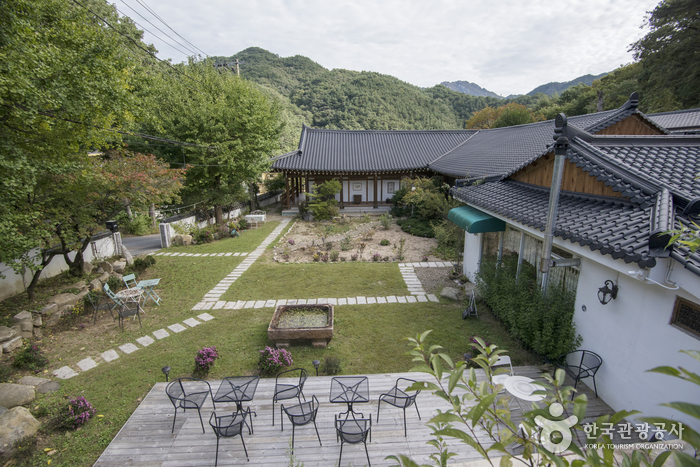
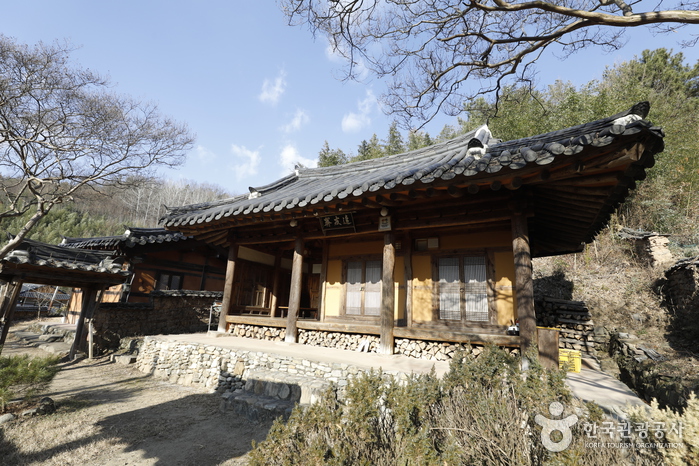
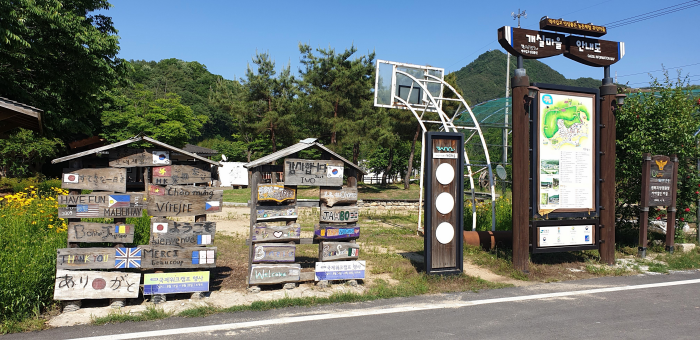
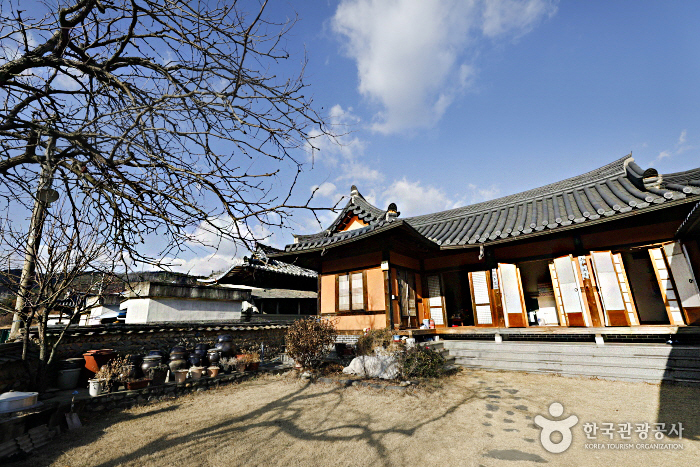
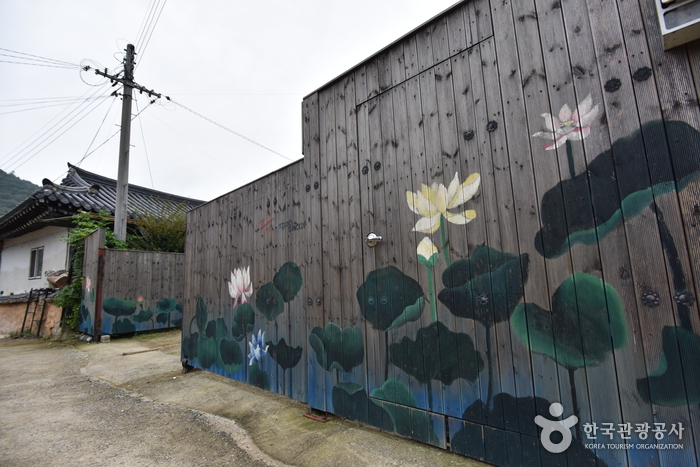
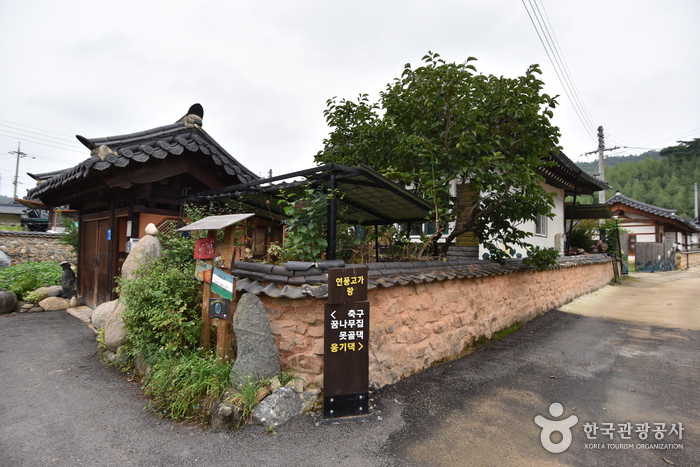
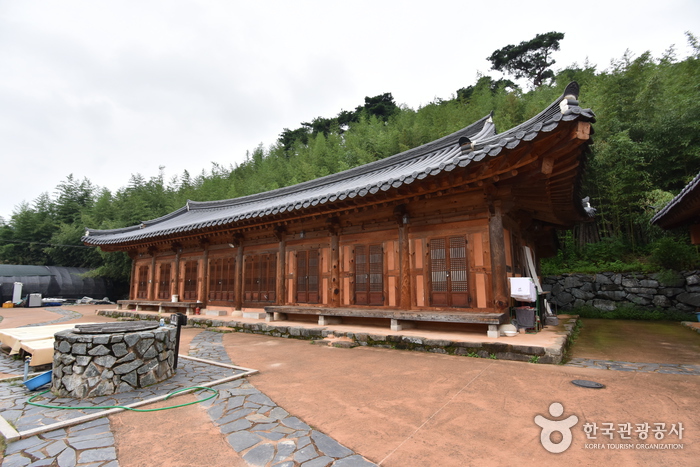
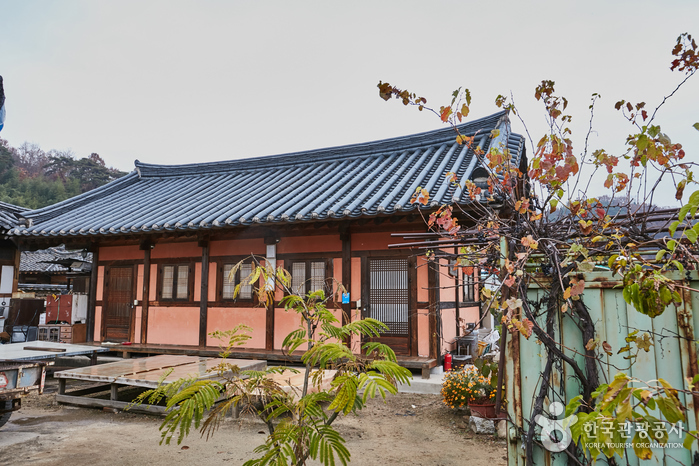
 Español
Español
 한국어
한국어 English
English 日本語
日本語 中文(简体)
中文(简体) Deutsch
Deutsch Français
Français Русский
Русский